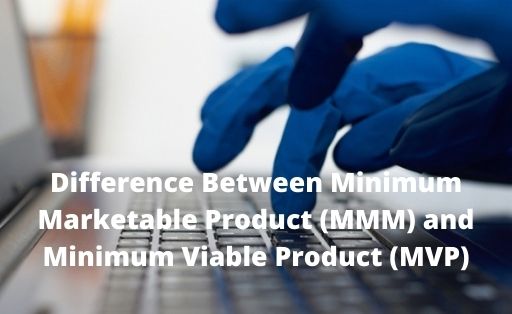The product development process is among the most significant and time-intensive responsibilities of a business. Even after performing in-depth research, gathering feedback from experts, and cost analysis, a lot of leaders argue about what product they should provide to customers. Many companies are perplexed about how they should start the process of manufacturing a product. This is where concepts such as minimum marketable product (MMP) and minimum viable product (MVP) can be useful to know.

What is the minimum viable product (MVP)?
The term minimum viable product (MVP) was introduced in the book Lean Startup by Eric Ries. In his book, Ries emphasized the importance of learning and iteration through his Build-Measure-Learn model. This model was introduced as an approach to lean product building for startups. It encouraged experimentation by users with guidance from a feedback loop and evidence-based learning.
MVP definition, according to Ries, is the version of a new product that has been generated by a team that has collected learning about the users with reduced effort. Essentially, an MVP is the initial prototype of a product with enough functionality for customers to use and provide feedback to the product developers. For example, if you want to test the feasibility of ads, you might publish an initial product with fake ads and see how often people are clicking your ads.
By building an MVP, you have a risk reduction mechanism. As an assessment tool, the MVP examines the risks involved in developing a product that will not be economically beneficial for your organization. Your team can make the product while investing less time and effort (hence the word “minimum” is used before “viable product”). However, it should not compromise on the core offering you are trying to deliver, as the MVP is being used as a tool for testing your idea and acquiring knowledge.
The advantages of MVP are plenty. Primarily, they can help to ascertain whether your business idea is good and if it will function in reality. It can allow you to assess the initial demand for your products without fully developing it. It can also lower the amount of risk and investment that is needed to market your product. Ultimately, an MVP can help you to implement a clear plan for refining your product further.
What is the minimum marketable product (MMP)?
A minimum marketable product (MMP) sequentially follows the MVP. Introduced as a concept in product development by Mark Denne and Jane Cleland-Huang, MMP consists of a core set of functions that addresses the needs of the customer. It produces the desirable experience for users and starts producing quantifiable value for a business. While being released into the market, a company can introduce an MMP which has the core feature that a user needs. Later, more features can be provided to improve the user experience.
For instance, your business might offer lawn maintenance services to clients and you want to introduce an application which allows customers to book their appointments on your website/app. The MMP could allow users to pick a date and time of their choice along with the desired service. Future versions of your product could allow users to choose a date, time, their preferred lawn cleaner, and options for rescheduling if needed.
Difference between minimum marketable product (MMP) and (MVP)
There are several differences between Minimum Marketable Product (MMP) and Minimum Viable Product (MVP). MVP is designed for learning purposes such that when the product is exposed to customers, the developers can get a set of questions answered. The MVP does not look anything similar to the real product that the business hopes to deliver to customers.
By comparison, an MMP is not a learning tool. It is a developed product that has already been examined for economic viability. It is the initial version of the product that is created by the business for its customers and encapsulates basic features that the business hopes to provide users. By this definition, the MMP does look similar to the future versions of the product.
While the MVP is less expensive to make, an MMP involves greater investment as it is fully developed. An MMP does not validate a business idea as it is a representation of the idea itself. At the same time, an MVP allows businesses to develop a product development roadmap, as well as an MMP that serves a somewhat similar role by enabling developers to gradually improve the functionality of their product.
Conclusion
An MVP and MMP serve their individual, unique roles in the product development process. When deciding whether you need an MVP or an MMP, consider what stage of the development process you are in. Determine whether you are trying to assess economic feasibility or test the first version of a developed product. Based on your needs, an MVP or an MMP can help you to understand the competitiveness of your product in the marketplace.
Get more informative content from TechTipTrick.
